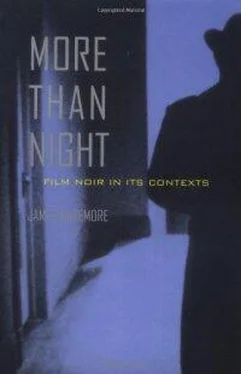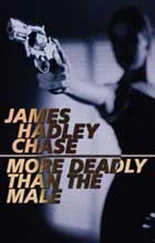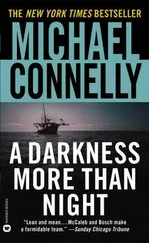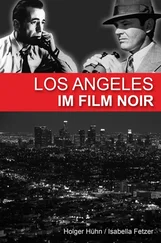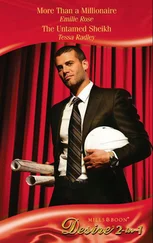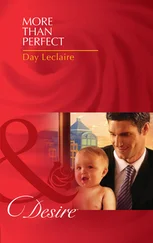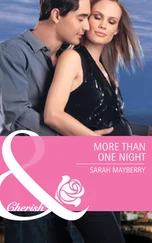(Museum of Modern Art Stills Archive.)
The suspense in Sling Blade derives from our awareness of Karl's past, but the tension is intensified by Thornton's performance. Frowning, stooped, and plodding, his speech filled with grunts and nervous twitches, he seems rather like an unsentimental Forrest Gump. Unless he tells us through sudden bursts of guttural dialogue, we cannot know what he is thinking; and even after we become aware of his innate sweetness, we can never be sure what he might do if he were to become intensely disturbed. As Doyle, the vicious, selfloathing boyfriend, Yoakum is equally remarkable. A construction worker and would-be leader of a surf-rocker band, Doyle spends much of the film lounging in Lindas' house, drinking beer and abusing not only Linda but also the boy, the "retard," and the "queer." He exudes a lazy, feline charm, but like most bullies he is a transparent manipulator and a bit of a coward. Karl's response to his accelerating threats is determined and almost passionless. After a touching farewell to Frank, he goes to the repair shop to fashion a ' 'sling blade" out of a broken lawnmower. Late at night, while Frank and Linda are away, he walks to Linda's house and confronts Doylewho, as usual, is reclining in an easy chair. The scene is played quietly, in a discreet long shot, and Doyle offers no resistance, even instructing Karl on how to dial 911 after the killing. The physical relationship between the two menone of them standing at the left and the other seated at the lower rightreminds us of an earlier moment, when Karl pays a visit to his aging father (Robert Duvall), who sits in an easy chair and feebly, contemptuously flicks his tongue at his son. Karl says that his father is beyond execution because he is "already dead." But in slaying Doyle, Karl is obviously reaching deep into his own past. The fatal blows are simple and swift, aimed outside the frame, at a figure whose body we never see. Karl then goes into the dimly lit kitchen, where, after calling the police, he eats a few of Linda's biscuits, first smearing them with mustard.
Sling Blade is not without flaws (it makes the southern town look improbably nice and almost completely white), but it creates an unusual moral fable, rendered in an austere, sometimes amusingly digressive style. Clearly, such a film does not need to be called noir. Even so, Sling Blade tells an oedipal story involving murder; it deals with a character who cannot escape his past; and it uses low-key lighting to generate a gothic mood. If nothing else, it shows that familiar motifs of noir can be given new and mildly unorthodox applications. Perhaps for that reason, and perhaps because it was something of a populist movie, it became a surprise hit. At some point, Miramax must also have recognized that an actor-director from Bill Clinton's Arkansas (with a name like "Billy Bob," no less) could be highly marketable; in any case, Thornton was suddenly transformed into a celebrity, and his screenplay won an Academy Award.
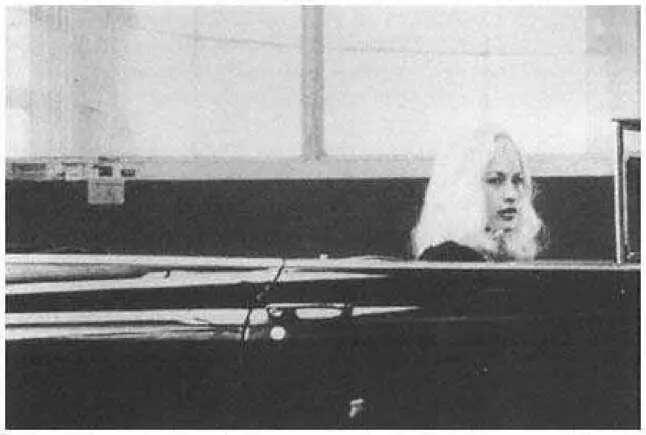
Noir as a dream: Patricia Arquette in Lost Highway (1997). (Museum of Modern Art Stills Archive.)
Example 3: David Lynch's Lost Highway (1997) makes a vivid contrast to both of the foregoing pictures and is somewhat easier to describe because its plot does not depend upon the achievement of a goal or the solution to an enigma. A thoroughgoing pastiche, this film brims with allusions to three decades of noir, which it uses to create a dream narrative. Significantly, the screenwriter is Barry Gifford, who worked on Lynch's earlier pastiche, Wild at Heart, and who once wrote an entertaining book about film noir, The Devil Thumbs a Ride (1988). Between them, Lynch and Gifford seem determined to evoke a sense of pure "noirness." Almost every image and every character in the film has an archetypal quality: a nocturnal road out of Detour and Psycho; a "Lost Highway Motel," where a woman may or may not be dead; an exploding house on stilts like the one in Kiss Me Deadly; an alienated jazz musician who might be a killer; a brooding rebel-without-a-cause who lusts after a gun moll; a sadistic gangster who is obsessed with porn movies and prostitutes; a woman's mutilated body, reminiscent of the Black Dahlia; and not one but two femmes fatalesthe first a redhead like Gilda, the second a blond like Phyllis Dietrichson.
These allusions are treated skillfully, but they did not please American critics, who felt that Lost Highway was excessively dehumanized and self-reflexive. To some extent, I would agree. The film can also be criticized because it relies too much upon the nowadays predictable methods of postmodernist art and because it clearly indulges in a semipornographic, male-adolescent fantasy. 11Even so, it seems to me an intelligent and weirdly beautiful picture that generates a powerful atmosphere of desire, terror, and dread. Throughout, Lynch's control of sound and image is worthy of his work in Blue Velvet, but in this case he takes greater risks with his audience, completely suspending narrative logic and never abandoning the feeling of a dream. His characters abruptly change their identities or become doubles, his plot twists back upon itself like a serpent, and his cool technique transforms familiar generic motifs into something almost musical or poetic. The total effect is closer to the avant-garde poetry of Eraserhead (1978) than to any of Lynch's subsequent work, and it has the audacity to run against the formally conservative grain of the contemporary art cinema.
To a certain extent, Lynch returns us to the issues in chapter 1 of this book. Whether he intended to or not, he has created something very close to the ideal film noir as the surrealist-inspired French might have imagined it in the decades after World War II. In other words, he gives us Hollywood sex and violence (suggesting far more than he shows) without the excuse of a realistic narrative; he mixes black, deadpan humor with horror; he utterly disorients his audience, never giving them an explanation for bizarre events; and he fetishizes everyday life, making a series of California living rooms and anonymous roadways seem truly uncanny. In the process, he also creates twin femmes fatales (both played by Patricia Arquette), who occasionally metamorphose into a creepy and rather androgynous male (Robert Blake). In "female" shape, this composite figure is the ultimate fetish objecta voluptuous, fleshy tease with vampire teeth, as stylized and heartless as an American automobile from the 1950s. Even when she is nude, she never removes her wigs or her six-inch heels.
No American thriller has ever gone so far to achieve the "disappearance of psychological bearings or guideposts" that Raymond Borde and Etienne Chaumeton regard as the main objective of film noir. And yet, despite all its disquieting effects, Lost Highway merely takes us where we have already been. Unlike the ideal cinema of surrealist criticism (or the work of a director like Luis Buñuel), it looks backward to an imaginary past, preoccupied with pop art and the dream imagery of affluent America in the last decade of film noir. It deals impressively with primal anxieties, but it seems to have no destructive anger, no specific politics, no purpose other than regression. Both the filmmakers and the characters keep circling around the same familiar bank of images, drawn like moths to a flame. Thus, for all its horror, sexiness, and formal brilliance, Lost Highway ultimately resembles all the other retro noirs and nostalgia films of the late twentieth century: it remains frozen in a kind of cinematheque and is just another movie about movies.
Читать дальше
